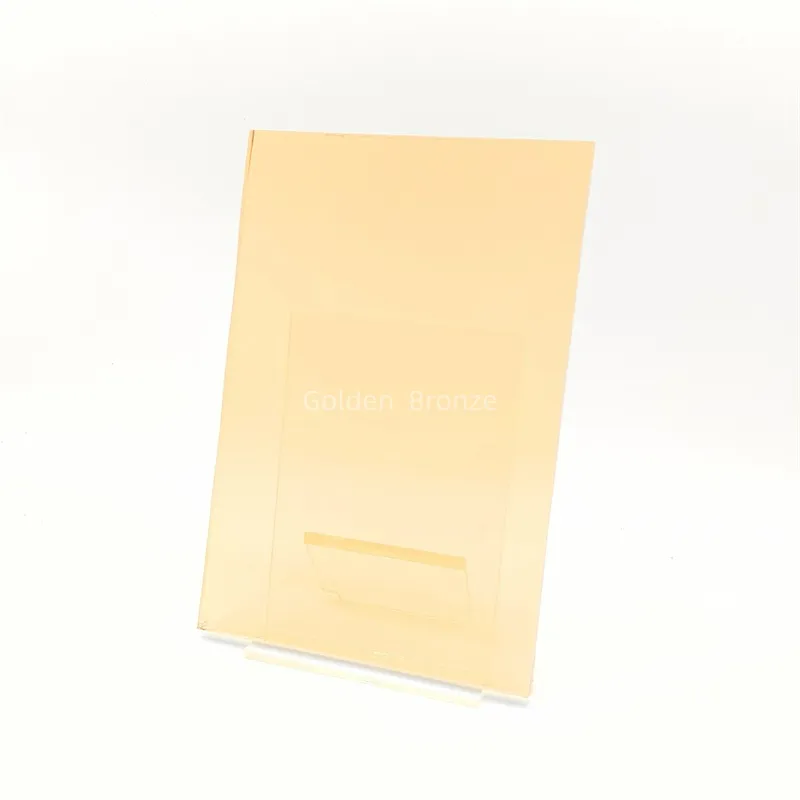Jan . 02, 2025 19:31 Back to list
variety of tempered glass
The Variety of Tempered Glass An Overview
Tempered glass, also known as toughened glass, has revolutionized the way we think about safety and aesthetics in a multitude of applications. With its superior strength compared to regular glass, tempered glass is an ideal choice for various uses, especially in environments where safety and reliability are paramount. This article delves into the different types of tempered glass, their manufacturing processes, applications, and benefits.
What is Tempered Glass?
Tempered glass is created through a process of extreme heating and rapid cooling, which increases its strength compared to standard glass. This process involves heating the glass to temperatures exceeding 600 degrees Celsius and then cooling it quickly to create a balance of tension and compression in the material. As a result, tempered glass is five to six times stronger than regular glass of the same thickness.
Types of Tempered Glass
1. Annealed Tempered Glass This is the most common type of tempered glass, which has been processed to enhance its strength. It is frequently used in buildings, doors, windows, and other structural applications.
2. Laminated Tempered Glass This type combines layers of glass with a plastic interlayer. It not only provides enhanced security but also offers improved sound insulation and UV protection. Laminated tempered glass is commonly used in automotive and architectural applications where safety and noise reduction are critical.
3. Heat-Strengthened Glass Similar to tempered glass, this type is also heated but does not undergo the rapid cooling process. While it is stronger than regular glass, it is not as strong as fully tempered glass. It is often used in applications like facades and overhead glazing.
4. Reflective Tempered Glass This type features a reflective coating that helps control solar heat gain and glare. It is particularly popular in commercial buildings where aesthetics and energy efficiency are crucial.
5. Patterned Tempered Glass Often used for decorative purposes, patterned tempered glass has a textured surface that adds an artistic touch to any application. This type is perfect for interior designs, shower doors, and decorative partitions.
Manufacturing Process
variety of tempered glass

The manufacturing of tempered glass involves several critical steps that ensure its strength and safety. Firstly, high-quality raw glass is cut into the desired sizes. The edges are then polished to eliminate any imperfections that could lead to weaknesses during the tempering process. After this, the glass is heated in a furnace to the necessary temperature before being rapidly cooled using air jets. This cooling process is what gives tempered glass its unique strength characteristics.
Applications of Tempered Glass
The versatility of tempered glass allows it to be used in various applications
- Architecture With its ability to withstand extreme conditions, tempered glass is frequently used in skyscrapers, façades, and balustrades. - Automotive Most car windows are made from tempered glass to enhance passenger safety. In the event of a shattering incident, tempered glass crumbles into small, blunt pieces that are less likely to cause injury. - Interior Design From shower doors to glass partitions and furniture, tempered glass adds a modern touch while ensuring safety and durability.
- Electronics Many smartphones and tablets use tempered glass screens for enhanced durability and scratch resistance.
Benefits of Tempered Glass
- Safety The most significant benefit of tempered glass is its safety. When broken, it shatters into small, rounded pieces rather than sharp shards, minimizing the risk of injury.
- Strength With its superior strength, tempered glass can withstand high impact and thermal stress, making it ideal for various demanding applications.
- Aesthetic Appeal Tempered glass offers a sleek, modern look that enhances the aesthetics of any space.
- Energy Efficiency Reflective and insulated tempered glass options can contribute to energy efficiency in buildings by reducing heat gain.
In conclusion, tempered glass comes in various forms, each catering to specific needs and applications. Its remarkable strength, safety features, and aesthetic versatility make it an indispensable choice across many industries. Whether it's for architectural marvels, automotive safety, or modern interior design, tempered glass serves as a testament to innovation and engineering excellence.
-
What Is Float Glass- All You Need to Know
NewsJun.04,2025
-
How Is Tempered Glass Made?
NewsJun.04,2025
-
What is Tempered Glass and What It's Used For?
NewsJun.04,2025
-
Different Types of Tempered Glass: Choosing the Right Solution for Your Application
NewsJun.04,2025
-
What is the Difference Between Float Glass and Normal Glass?
NewsMay.30,2025
-
Differences Between Float Glass, Tempered Glass and Laminated Glass
NewsMay.29,2025
Related PRODUCTS














